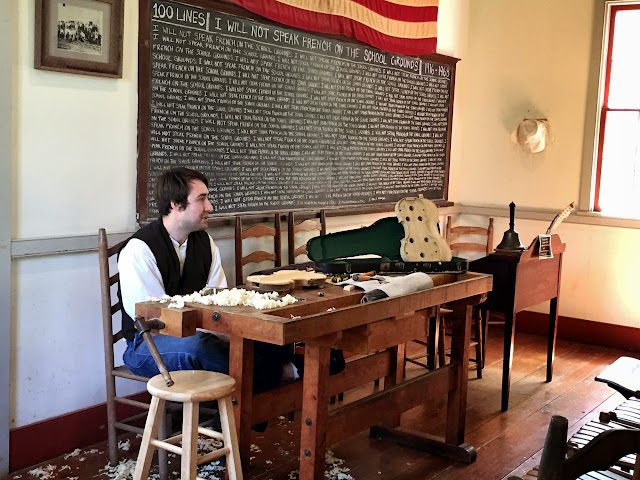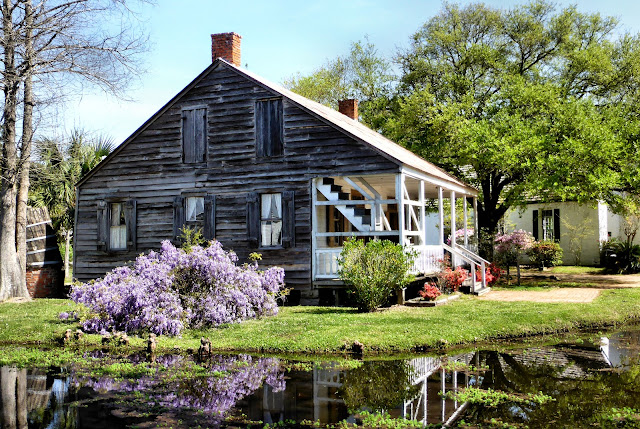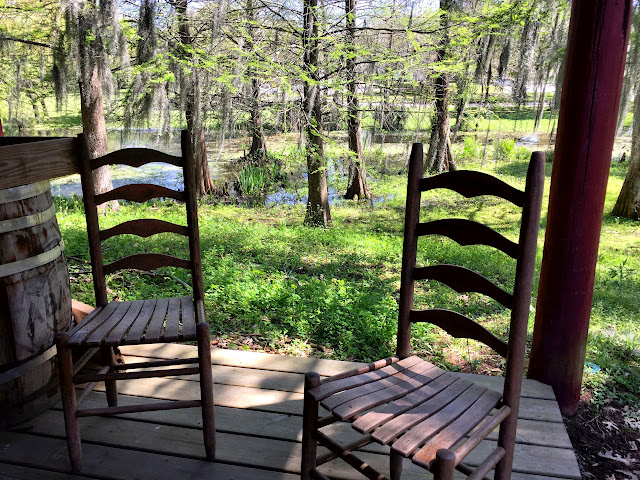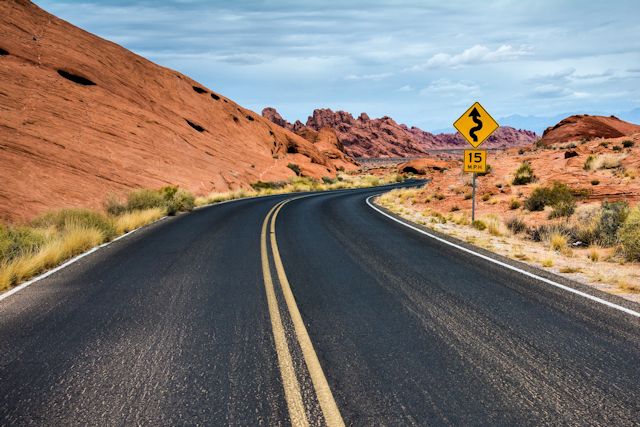
CHASING THE BLUES, Chapter 7.
IN WHICH WE FOLLOW AN ALLEY
space.
space.
Once our car was serviced at the local Acura dealer Monday morning, we left Baton Rouge, continuing back east on the top section of a loop that would take us almost back to New Orleans. Last week when plotting our course from New Orleans to Baton Rouge, we debated whether to follow the southern route through the heart of Acadiana or stick with the river road through Plantation Alley. Unwilling to choose one over the other, we opted to do both.
After the cultivation of sugar cane was introduced into Louisiana in the late 18th century, large sugar plantations sprang up along the Mississippi River to raise this lucrative crop. Enriched on the backs of enslaved laborers, wealthy planters eventually lined the river banks between New Orleans and Natchez with columned Greek Revival mansions set amidst lush gardens and massive moss-draped live oak trees. Writing in Life on the Mississippi, Mark Twain described the scene:
"From Baton Rouge to New Orleans, the great sugar plantations border both sides of the river all the way, . . . Plenty of dwellings . . . standing so close together, for long distances, that the broad river lying between two rows, becomes a sort of spacious street."
Today the number of these opulent houses is greatly reduced, but a few survive and are open to tourists, offering a glimpse of a vastly different era. The seventy-mile stretch along the river from Baton Rouge to New Orleans is promoted as Louisiana's Plantation Alley, and we had selected four plantations to visit in the next couple of days.
Our first stop was Nottoway, billed as the largest surviving antebellum plantation in the South. Purchased by an Australian health care entrepreneur in 1985, the plantation was returned to its 1850s splendor in an extensive $15 million renovation in 2009. The project also added new resort style lodgings and venues popular for weddings.
 |
| Nottoway Plantation |
Leaving Nottoway, we drove along the river to Burnside, crossed on the Sunshine Bridge at Donaldsonville, and continued east to Houmas House near the little hamlet of Darrow. Having read a bit about this plantation and its features, we opted to pass on a guided tour of the fine house in favor of walking through its celebrated gardens. Mind you, there was still an admission fee involved but it cost less in terms of cash and time, or so we thought.
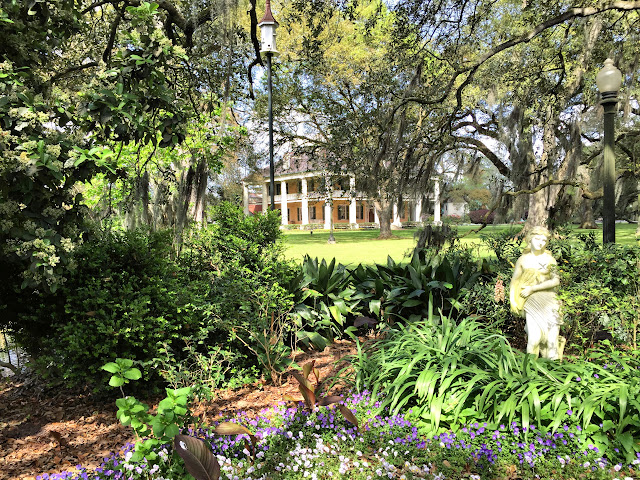 |
| Houmas House Plantation |
From Houmas, we continued east to Gonzales where we stayed overnight in the local Hampton Inn, eager for what awaited us along Plantation Alley the next day.
On Tuesday morning, we recrossed to the west bank of the river to visit Oak Alley, the 1,200-acre estate that is the epitome of the antebellum plantation. As its name implies, the mansion is situated at the end of an alley of 28 majestic live oak trees, which were more than a century old when the house was built in the late 1830s.
 |
| Oak Alley Plantation |
From Oak Alley, we drove to the nearby Laura plantation for a visit, but after learning about the extreme restrictions, unlike any we had encountered—no setting foot anywhere on the property unless accompanied by a guide, very limited areas for photography—we decided that it was just too prohibitive for our tastes.
We tried again at Whitney plantation, but found it empty, whether from some inadequacy in promotion or other reasons, we were not sure. San Francisco plantation was next on our list, but its location behind a chain-link fence surrounded by a Marathon Oil processing plant was offputting, so we passed again. Judging by the empty parking lot, other tourists did as well.
Our Tuesday ended just 20 miles from New Orleans in the town of La Place on the east bank of the river. When we visited the local Wal-Mart seeking grocery supplies, we noticed again what must be a local tradition as we have seen it elsewhere. The parking lot was full of stray shopping carts left in random locations, even when a cart corral was nearby.
Tomorrow we'll head back west and north, finally leaving the fascinating Louisiana after eleven interesting days of exploring the southern half of this unique state.
space.
MONDAY, 30 MARCH - TUESDAY, 31 MARCH 2015
Chapter 7 Stats
- Miles driven: 225
- Plantations visited: 5
- Weather: 58° to 84°, clear to partly cloudy
- Letterboxes found: 0
- Blues music heard: nope
 |
| Owners' Cemetery at Nottoway |
 |
| Luxurious molding at Nottoway |
 |
| Side view of Nottoway shows off multi-story porches. |
 |
| White ballroom at Nottoway reflects owner's intention that nothing detract from his daughters and their lovely ballgowns. |
 |
| Houmas House and one of its venerable live oaks |
 |
| A sight from the Houmas House gardens |
 |
| Another creation of the Houmas House landscapers |
 |
| A massive beehive on the Houmas House grounds |
 |
| A view of Houmas House from the road, familiar perhaps to those who saw the movie Hush, Hush, Sweet Charlotte |
 |
| The Houmas House garçonnière (lodging for unmarried young men) |
 |
| View of Oak Alley from the second story veranda |
 |
| Our very capable Oak Alley tour guide, Julia |
 |
| Sugar kettle at Oak Alley, traditionally used in 19th century sugar refining |
 |
| Bauxite ore stains everything rust color at this alumina plant on the river near Gramercy, LA. |
 |
| The 1849 Louisiana State Capitol |



















